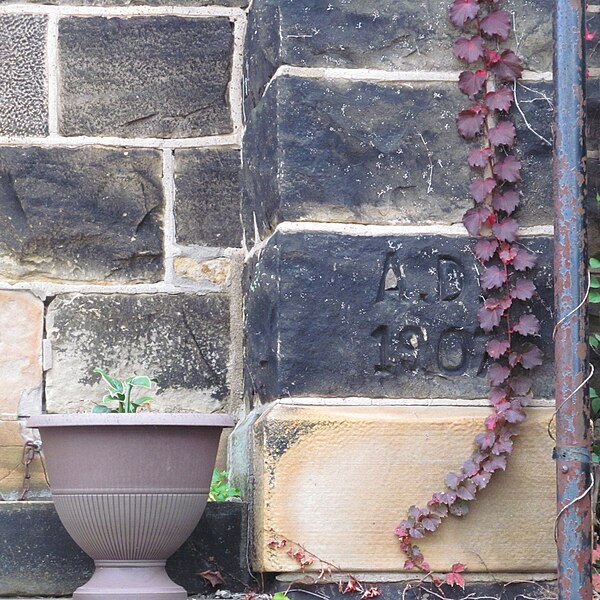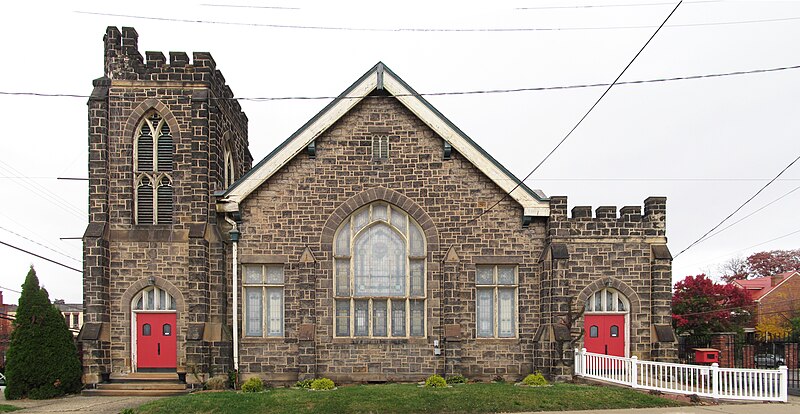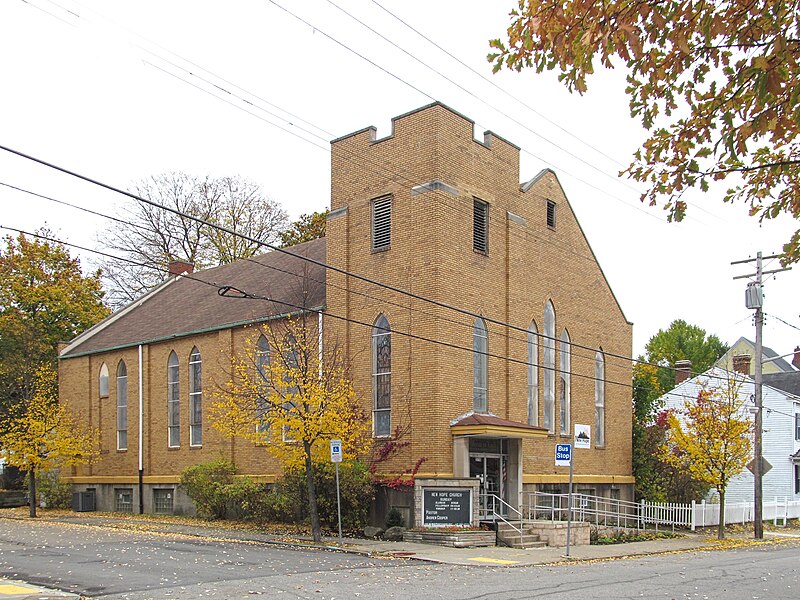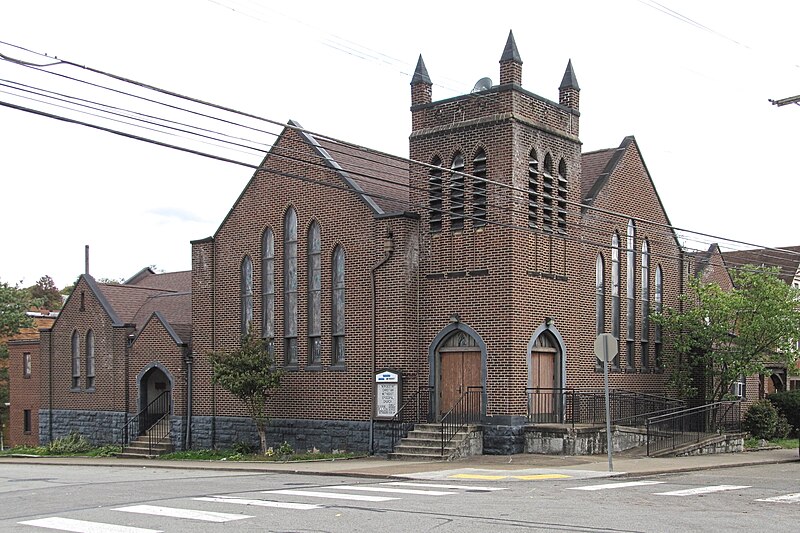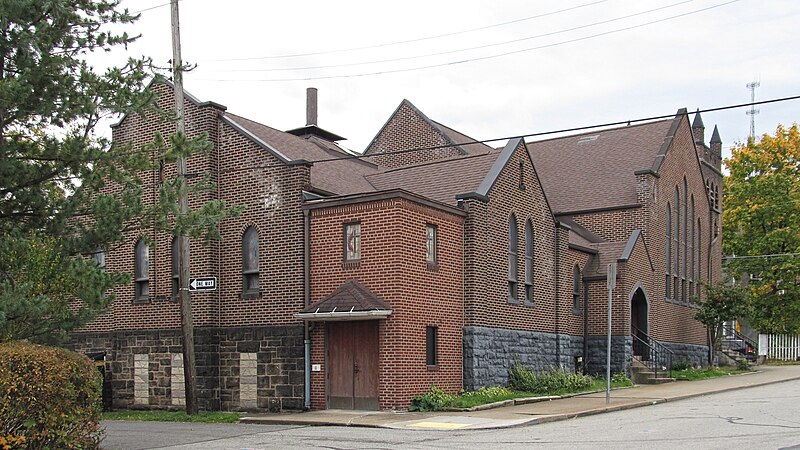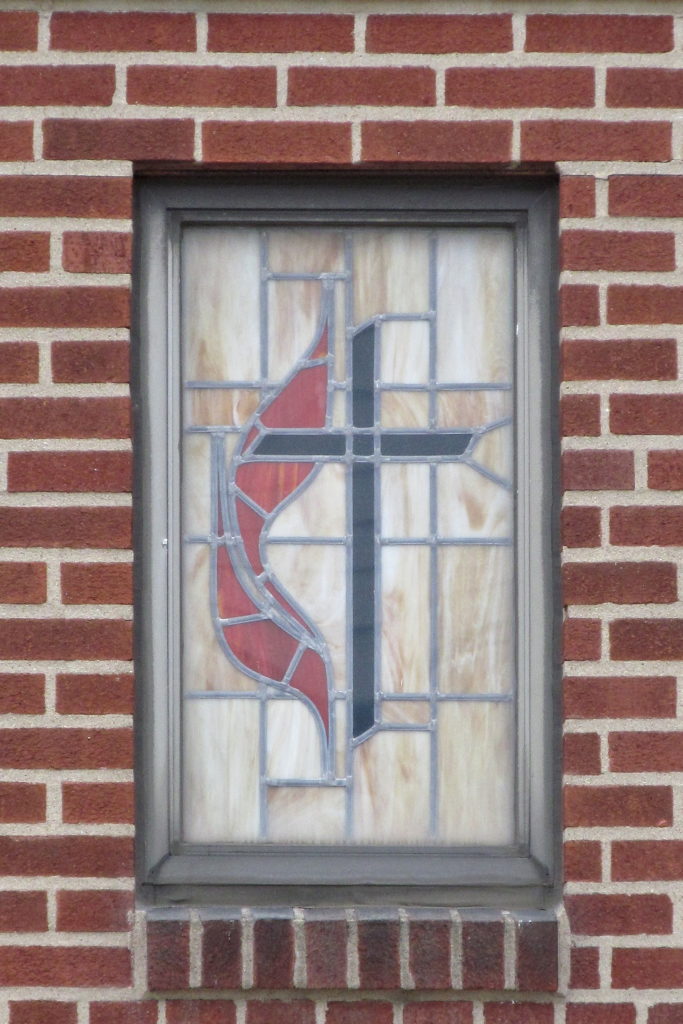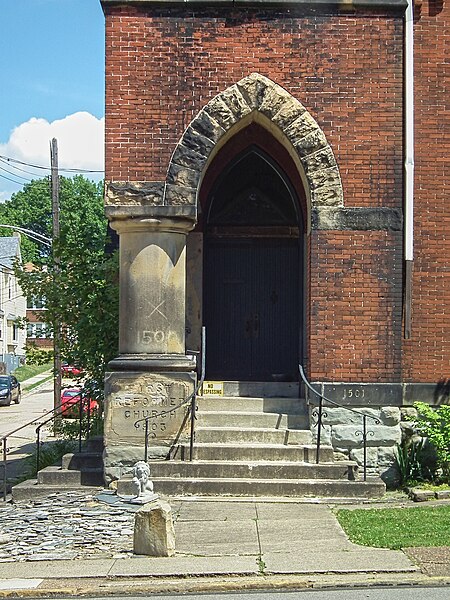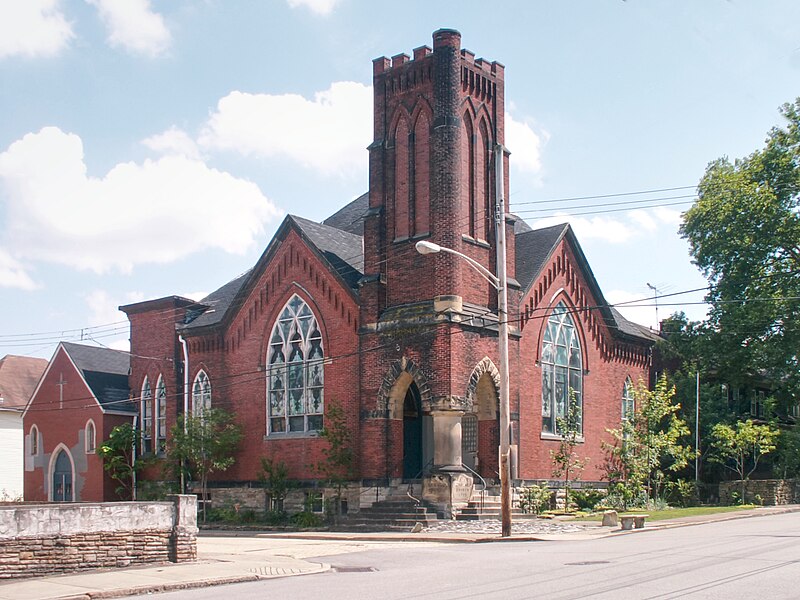
This church has a complicated history that perhaps someone from Brighton Heights could help old Pa Pitt sort out. It was built in 1907 as a Congregational church, replacing an earlier frame building. By 1923 it was the Eleventh United Presbyterian Church. Now it belongs to the Greater Allen African Methodist Episcopal congregation, which has kept it in beautifully original shape, right down to the uncleaned black stones, which Father Pitt loves.
